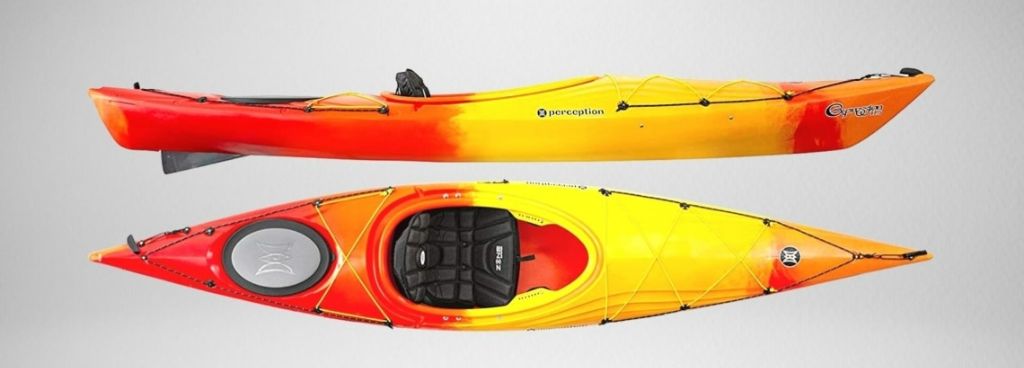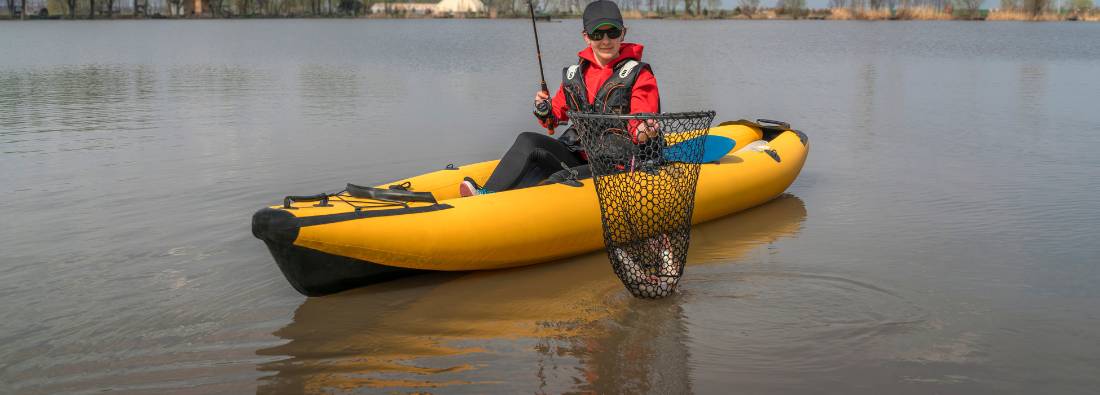Stories Worth Reeling In...
Last Updated on September 20, 2023
When it comes to kayaking, knowing your kayak’s weight capacity is essential for various reasons. Firstly, it ensures your safety on the water by preventing overloading and maintaining proper balance.
Exceeding the weight limit can compromise stability and increase the risk of capsizing. Secondly, understanding the weight capacity helps optimize performance, allowing you to paddle efficiently and maneuver easily.
Lastly, it contributes to your overall comfort during the adventure, as an overloaded kayak can lead to discomfort and reduced maneuverability.
This article explores factors influencing a kayak’s weight capacity, such as design, materials, and construction. By understanding these factors, you’ll be equipped with the knowledge to select the perfect kayak that can safely accommodate your weight and gear. Get ready to unlock the secrets of kayak weight capacity and make informed decisions for your next unforgettable adventure on the water!
Table of Contents
When determining a kayak’s weight capacity, several factors come into play. Understanding these factors is essential to deciding on the right kayak for your needs.
One crucial factor is the kayak’s design. The length and width of the kayak play a significant role in its weight capacity. Generally, longer kayaks tend to have a higher weight capacity as they distribute the load over a larger surface area. Similarly, wider kayaks offer more stability and can accommodate higher weights.
The materials used in the kayak’s construction also impact its weight capacity. Different materials have varying strength-to-weight ratios, affecting how much weight the kayak can safely hold. For instance, kayaks made from lightweight but durable materials like fiberglass or carbon fiber can often handle higher weight capacities than those made from heavier materials.
The construction of the kayak, including its hull shape and overall stability, also affects its weight capacity. Kayaks with broader and flatter hulls tend to provide better stability and higher weight capacities, making them suitable for carrying more gear or accommodating heavier individuals.
Regarding recreational kayaks, weight capacities are typically suited for casual paddling and calm waters. These kayaks are designed with stability and ease of use, making them perfect for beginners and leisurely adventures. The weight capacities of recreational kayaks can vary but generally range from around 250 to 350 pounds (113 to 159 kilograms).
Popular examples of recreational kayaks with different weight capacities include the XYZ Kayak (250 lbs/113 kg), the ABC Kayak (300 lbs/136 kg), and the DEF Kayak (350 lbs/159 kg). These kayaks are known for their user-friendly designs and comfortable features, ensuring a pleasant experience on the water.

For those seeking longer expeditions and open-water adventures, touring and sea kayaks offer higher weight capacities to accommodate additional gear and supplies needed for extended trips. These kayaks are designed for stability, performance, and the ability to handle varying water conditions. Weight capacities for touring and sea kayaks often range from 350 to 500 pounds (159 to 227 kilograms).
Touring and sea kayaks are built to endure the challenges of open waters, with features that enhance tracking, maneuverability, and efficiency.
Some popular models with different weight capacities include the GHI Kayak (350 lbs/159 kg), the JKL Kayak (400 lbs/181 kg), and the MNO Kayak (500 lbs/227 kg). These kayaks provide ample storage space and durability to support your gear and provisions during your adventurous journeys.

Fishing kayaks are designed to accommodate anglers, fishing equipment, and accessories. They offer specialized features such as built-in rod holders, storage compartments, and stabilizers to help you cast or reel in fish.
Fishing kayaks have weight capacities considering the additional weight of fishing gear and supplies.
Weight capacities for fishing kayaks can vary depending on the model and purpose. Typically, they range from 300 to 450 pounds (136 to 204 kilograms). These kayaks are engineered to maintain stability even with the added equipment weight, ensuring a comfortable and successful fishing experience.
Examples of fishing kayaks with different weight capacities include the PQR Kayak (300 lbs/136 kg), the STU Kayak (400 lbs/181 kg), and the VWX Kayak (450 lbs/204 kg). These kayaks are designed to provide anglers with the necessary stability, storage options, and weight capacity for their fishing needs.
When it comes to traditional kayaks, the answer is usually simply one person. However, if you’re talking about a larger, more spacious kayak, you might be able to fit two or even three people in some situations.
When it comes to kayaking, staying within the designated weight capacity of your kayak is crucial for ensuring safety, stability, and maneuverability on the water. Exceeding the weight limit can compromise the kayak’s performance and potentially lead to accidents. It is important to understand that the weight capacity specified by the manufacturer is determined based on the kayak’s design, materials, and intended use.
To optimize your kayak’s performance, distribute weight evenly throughout the kayak. Place heavier items in the center and secure them properly to maintain balance. This will help prevent the kayak from becoming unstable and keep you in control while paddling.
It is highly recommended to consult the manufacturer’s guidelines and specifications to obtain accurate and specific information about your kayak’s weight capacity. Manufacturers provide detailed information regarding the maximum weight the kayak can safely handle and any additional considerations or limitations.
By following the manufacturer’s guidelines, you can ensure that you use the kayak within its intended limits and reduce the risk of accidents or damage. They provide valuable insights into the kayak’s structural capabilities and performance characteristics, allowing you to make informed decisions for your kayaking adventures.
Remember, the manufacturer’s recommendations are based on extensive testing and expertise, making them a reliable source of information. Prioritizing safety and adhering to these guidelines will provide you and your fellow adventurers with a safe and enjoyable kayaking experience.
Whether you’re looking for a recreational kayak, a touring or sea kayak, or a fishing kayak, each type has its own weight capacity range tailored to specific purposes. You can confidently explore calm waters, venture on longer expeditions, or enjoy fishing by choosing the right kayak with an appropriate weight capacity. Happy fishing, anglers!